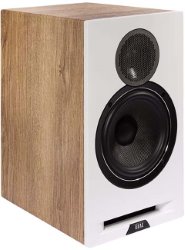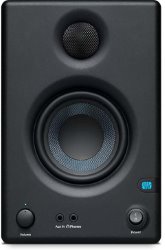ELAC Debut Reference B6.2 vs. Presonus Eris E3.5
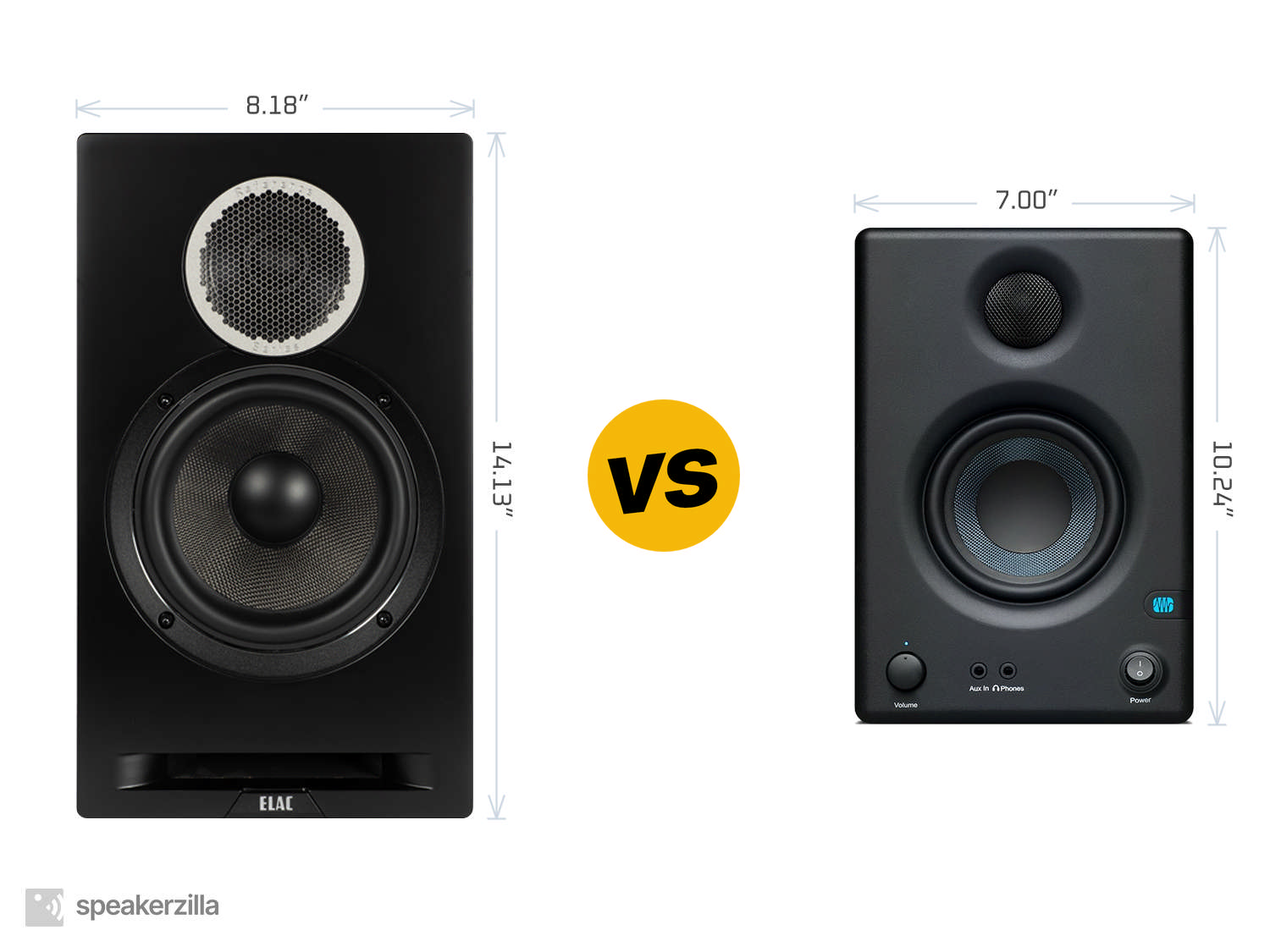
| ELAC Debut Reference B6.2 Bookshelf Speakers | Presonus Eris E3.5 3.5” Near Field Studio Monitor |
| MSRP | |
| $700 | $100 |
| Dimensions (H × W × D) | |
|
14.13” × 8.18” × 10.82” 359mm × 208mm × 275mm |
10.24” × 7.00” × 7.68” 260mm × 178mm × 195mm |
| Power Type | |
| Passive | Powered |
| Frequency Response | |
| 44-35,000 Hz | 80-20,000 Hz |
| ASR Score | |
| n/a | 1.5 |
| ASR Score w/Subwoofer | |
| n/a | 4.3 |
|
Amazon.com
|
Amazon.com
|
Key Takeaways
TLDR Summary: In the search for compact sonic excellence, the ELAC Debut Reference B6.2 and PreSonus Eris E3.5 face off. The B6.2, with its richly detailed soundstage and audiophile-approved tuning, caters to the discerning ear desiring warmth and depth. Conversely, the Eris E3.5, a staple in budget home studios, offers precise audio reproduction, essential for mixing tasks. While the ELAC shines in passive listening setups requiring an external amplifier, the PreSonus provides convenience with its active design. Choosing between these two depends on whether your priority is the hi-fi listening experience or critical audio work.
Speaker Comparison
When it comes to choosing speakers for a high-fidelity audio system, it's essential to understand how different designs and purposes can affect the sound experience. The ELAC Debut Reference B6.2 and the Presonus Eris E3.5 are two speakers that cater to different audiences, yet they both strive to deliver exceptional sound. The ELAC Debut Reference B6.2 is a bookshelf speaker that has been praised for its outstanding performance in a home stereo system, while the Presonus Eris E3.5 is a compact nearfield studio monitor designed for audio editing and mixing.
Design Philosophy and Intended Use
The ELAC Debut Reference B6.2 boasts a sophisticated design that reflects its audiophile pedigree. It's an evolution of the well-regarded Debut series, with a focus on delivering a warm and natural sound that's well-suited for extended listening sessions. In contrast, the Presonus Eris E3.5 is built with utilitarian principles in mind, prioritizing flat frequency response and accurate sound reproduction that's crucial for studio monitoring. While both are aesthetically pleasing, their design intentions are clearly divergent, shaping the context in which they excel.
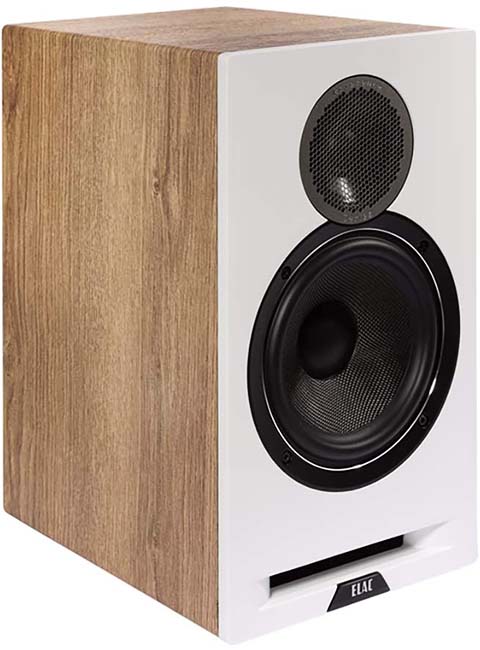
 (at Amazon.com)
(at Amazon.com)Sound Quality and Performance
The B6.2's sound signature is characterized by a full-bodied midrange and a smooth high-end, which makes it particularly great for vocal-centric music and intricate acoustic arrangements. The speaker's 6.5-inch aramid-fiber woofer and 1-inch cloth dome tweeter work in harmony to produce a sound that's both detailed and expansive. In contrast, the Eris E3.5, with its 3.5-inch woven composite drivers and 1-inch silk dome tweeters, focuses on delivering a flat and accurate response, which is essential for mixing and mastering audio. Its smaller woofer size means that it won't deliver the same room-filling bass as the B6.2, but for its size and purpose, it packs an impressive punch.
Build Quality and Aesthetics
The ELAC Debut Reference B6.2 features a high-quality MDF cabinet with an attractive wood veneer finish, while its front-firing port allows for more flexible placement in the listening room. The build quality is robust, ensuring that the speaker not only looks good but can also stand the test of time. On the other hand, the Presonus Eris E3.5 has a more compact and industrial design, with vinyl-laminated MDF that's practical and easy to clean. Its aesthetics are more in line with the minimalist, functional look that's common in studio environments. Although it may not have the same visual impact as the ELAC, it offers durability and a professional touch to any workspace.
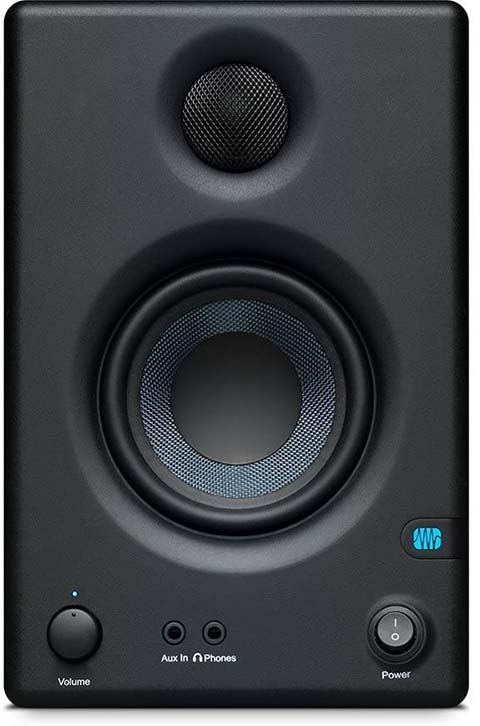
 (at Amazon.com)
(at Amazon.com)When it comes to user customization, the Presonus Eris E3.5 provides more control options right at the front of the speaker. Users have access to volume control, as well as a convenient auxiliary input and headphone jack. This user-friendly approach is in stark contrast to the ELAC B6.2, which adheres to the traditional passive design, requiring an external amplifier or receiver to manage sound levels and inputs. This distinction underlines their intended usage scenarios, with the Eris E3.5 catering to active users who might need to make adjustments on the fly.
Compare to similar speakers
Connectivity is another aspect where these two speakers differ significantly. The ELAC Debut Reference B6.2 relies on binding post speaker terminals for connection to an amplifier, which is typical for passive speakers in home audio setups. The Eris E3.5, being an active monitor, includes multiple inputs such as TRS, RCA, and even offers the convenience of a front-panel stereo aux input for mobile devices. This makes the E3.5 more versatile for various professional and home studio applications.
In summary, the ELAC Debut Reference B6.2 and the Presonus Eris E3.5 cater to distinct niches within the audio world. The ELAC is a refined speaker that's designed to please the home audiophile with its rich, immersive sound, while the Presonus is tailored to meet the critical demands of audio production with its precise and accurate monitoring capabilities. While both are excellent in their respective domains, the choice between them ultimately comes down to the listener's needs and application, be it for the pure enjoyment of music or the creation of it.
- ELAC Debut Reference B6.2 reviews and FAQs
- Presonus Eris E3.5 reviews and FAQs
Check Current Prices: |
|
|
Amazon.com
|
Amazon.com
|
Affiliate Disclosure: As an Amazon Associate, we earn from qualifying purchases.
